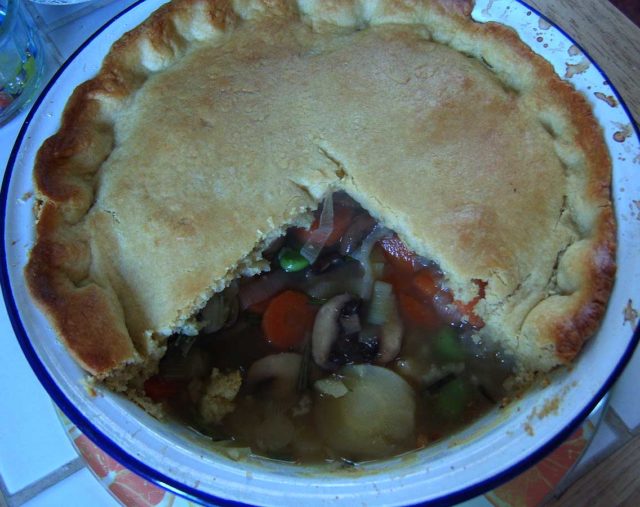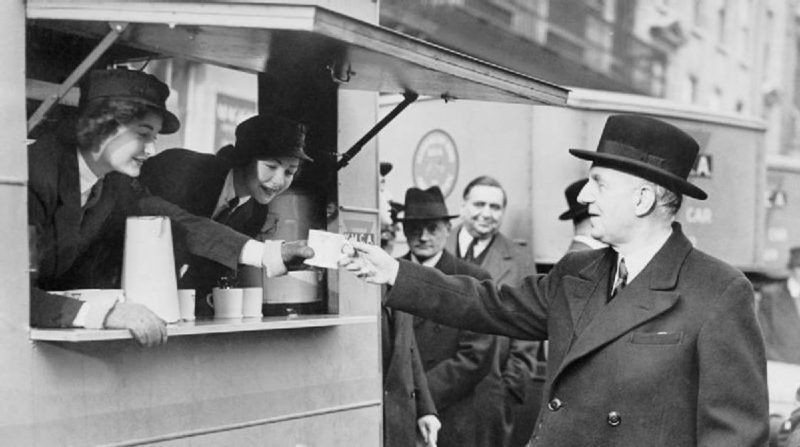Autumn 1940 was Britain’s darkest hour. Hitler had conquered Europe and was on the verge of conquering Britain. The US had yet to join the war. The Nazis turned to a simple strategy to defeat the Brits – starvation.
The harsh reality for prime minister Winston Churchill was that the war would be won or lost on the Atlantic Ocean.
With the nation’s food supply cut in half, the Germans kept hunting supply convoys on the ocean and torpedoing the boats loaded with wheat and meat.
“This mortal danger to our life-lines gnawed at my bowels,” Churchill wrote.
Churchill, however, kept the danger secret knowing the effect it would have had on morale to tell the country just how dire their food situation was.
But housewives around the British Isles had a secret weapon, the Woolton Pie, named after the minister of Food, Lord Woolton. Everything beneath the brown crust of potato was a beige mush, a blend of turnips, swedes, carrots, cauliflower, and oatmeal.

It had the appearance of a meat pie, but there was no meat. Woolton had tasked the chef at London’s ritzy Savoy hotel to come up with a recipe that would substitute home-grown root vegetables for meat.
With rationing, meat had become so expensive that buying it meant going without other things. When you were only allowed one egg, two ounces of butter, and four rashers of bacon per week, there wasn’t much else to go without. Meat became a rare treat.
Woolton called it a “food war.” Some would credit Woolton with the pie that won that war. The pie was the catalyst to change Britain’s diet. The new diet kept the public from going hungry, but more than that, it proved to be more nutritious than their old diet. According to the British Nutrition Foundation, the British people were in better health at the end of the war than at the beginning. Infant mortality rates dropped, and life expectancy rose.
Historians say that Woolton was Churchill’s most successful minister – as important on the home front as his generals were on the battle front. The actual science of the new diet was the work of Sir Jack Drummond. He had authored a study of the national diet with his wife and found themselves suddenly thrust into a role allowing them to adjust the entire nation’s diet.
Suddenly everyone in Britain was eating an all-beige meal – beige soup, thickened and containing beige mince, beige beans, and some beige potatoes. Propagandists jumped on the leveling effect of the new diet, now everyone was equal; all classes from highest to lowest were eating the same thing.
This was only partly true. The upper-class still had their estates and wild game was never rationed. They had their wine cellars and kitchen gardens.
Rationing also led to a black market of food. No one was actually policing the chickens on the farms to count the eggs. Many farmers made an extra income on black market eggs.
Another force rose up in Britain to meet the needs of the country. The Women’s Land Army, known as the “Land Girls,” volunteered to replace the men off at war. They milked cows, brought in harvests. Without them, the new diet would never have been possible.
They also inspired British Country Chic.
The official wardrobe of a Land Girl was a knee length overcoat two green wool vee-neck jumpers, two pairs of khaki knee breeches, a pair of Wellington boots with thick treads and a pair of walking shoes. The Burberry brand traces back to the World War I army trench coat. The World War II contribution to fashion was Barbour and the Land Rover.
Many of the Land Girls enjoyed the country life so much that they stayed, married the men when they returned from the war and frequently married into the landed families, The Daily Beast reported.
The longest lasting effect of the war, though, is the healthiness of the diet. The geographic reality of the island nation meant that the German blockade separated them from the two most dangerous food groups: sugars and fats. Also, the diet was aided by the high fiber content of the Woolton pie and another of his inventions: the national loaf.
Woolton banned white bread since it wasted flour. He invented a new loaf of bread with wholemeal flour and added calcium and vitamins. It was dense, but it was good for the health of those who ate it.
